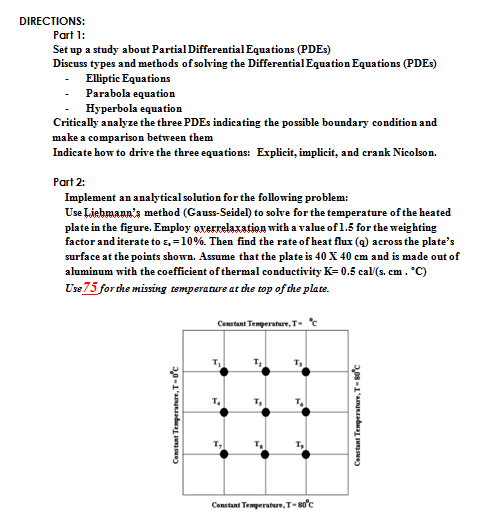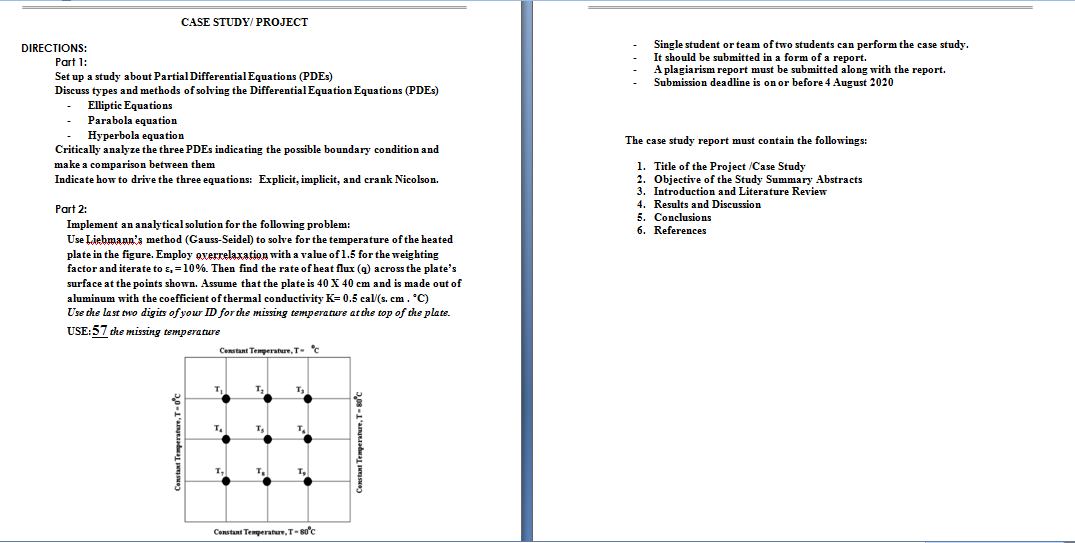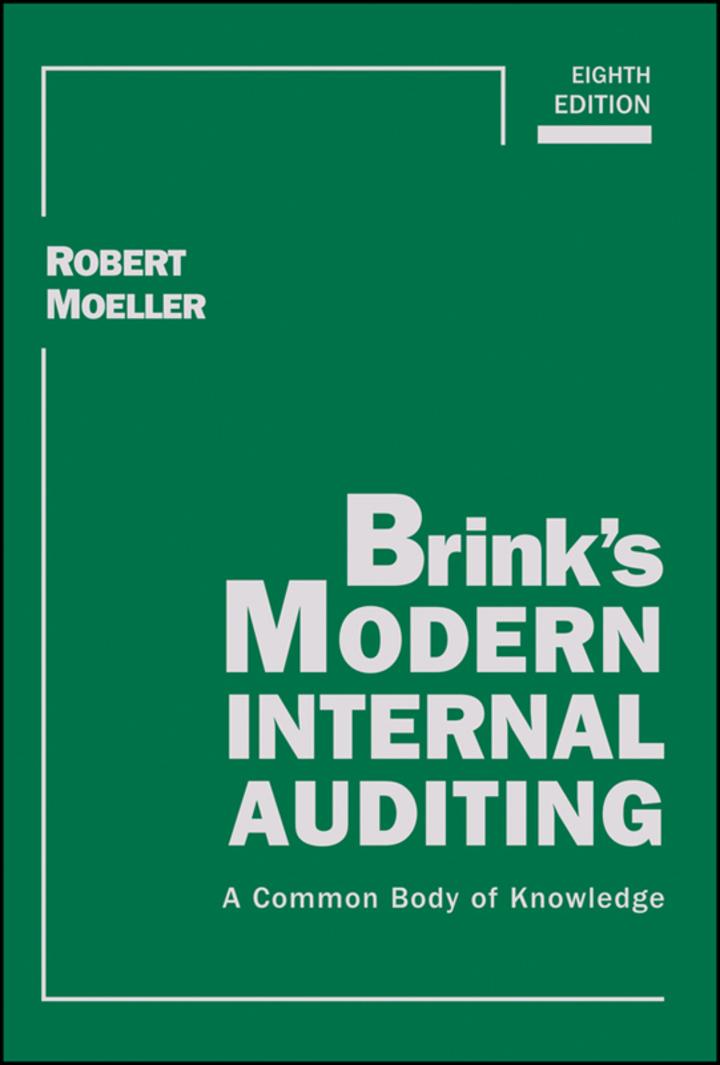

DIRECTIONS: Part 1: Set up a study about Partial Differential Equations (PDE) Discuss types and methods of solving the Differential Equation Equations (PDES) Elliptic Equations Parabola equation Hyperbola equation Critically analyze the three PDEs indicating the possible boundary condition and make a comparison between them Indicate how to drive the three equations: Explicit, implicit, and crank Nicolson. Part 2: Implement an analytical solution for the following problem: Use Liebmann's method (Gauss-Seidel) to solve for the temperature of the heated plate in the figure. Employ overrelaxation with a value of 1.5 for the weighting factor and iterate to s = 10%. Then find the rate of heat flux (q) across the plate's surface at the points shown. Assume that the plate is 40 X 40 cm and is made out of aluminum with the coefficient of thermal conductivity K= 0.5 cali(s. cm. 'C) Use 75 for the missing temperature at the top of the plate. Constant Temperature, T- T, . Constant Temperature, To'c Constant Temperature, T-80C T. Constant Temperature, T- soC CASE STUDY/ PROJECT Single student or team of two students can perform the case study. It should be submitted in a form of a report. A plagiarism report must be submitted along with the report. Submission deadline is on or before 4 August 2020 DIRECTIONS: Part 1: Set up a study about Partial Differential Equations (PDE) Discuss types and methods of solving the Differential Equation Equations (PDE) Elliptic Equations Parabola equation Hyperbola equation Critically analyze the three PDEs indicating the possible boundary condition and make a comparison between them Indicate how to drive the three equations: Explicit, implicit, and crank Nicolson. The case study report must contain the followings: 1. Title of the Project /Case Study 2. Objective of the Study Summary Abstracts 3. Introduction and Literature Review 4. Results and Discussion 5. Conclusions 6. References Part 2: Implement an analytical solution for the following problem: Use Liebmann's method (Gauss-Seidel) to solve for the temperature of the heated plate in the figure. Employ overrelaxation with a value of 1.5 for the weighting factor and iterate to g = 10%. Then find the rate of heat flux (q) across the plate's surface at the points shown. Assume that the plate is 40 x 40 cm and is made out of aluminum with the coefficient of thermal conductivity K=0.5 cal(s.cm. C) Use the last two digits of your ID for the missing temperature at the top of the plate. USE:57 the missing temperature Constant Temperature, T- T T T T. . T T, T. T, Constant Temperature, T-80C DIRECTIONS: Part 1: Set up a study about Partial Differential Equations (PDE) Discuss types and methods of solving the Differential Equation Equations (PDES) Elliptic Equations Parabola equation Hyperbola equation Critically analyze the three PDEs indicating the possible boundary condition and make a comparison between them Indicate how to drive the three equations: Explicit, implicit, and crank Nicolson. Part 2: Implement an analytical solution for the following problem: Use Liebmann's method (Gauss-Seidel) to solve for the temperature of the heated plate in the figure. Employ overrelaxation with a value of 1.5 for the weighting factor and iterate to s = 10%. Then find the rate of heat flux (q) across the plate's surface at the points shown. Assume that the plate is 40 X 40 cm and is made out of aluminum with the coefficient of thermal conductivity K= 0.5 cali(s. cm. 'C) Use 75 for the missing temperature at the top of the plate. Constant Temperature, T- T, . Constant Temperature, To'c Constant Temperature, T-80C T. Constant Temperature, T- soC CASE STUDY/ PROJECT Single student or team of two students can perform the case study. It should be submitted in a form of a report. A plagiarism report must be submitted along with the report. Submission deadline is on or before 4 August 2020 DIRECTIONS: Part 1: Set up a study about Partial Differential Equations (PDE) Discuss types and methods of solving the Differential Equation Equations (PDE) Elliptic Equations Parabola equation Hyperbola equation Critically analyze the three PDEs indicating the possible boundary condition and make a comparison between them Indicate how to drive the three equations: Explicit, implicit, and crank Nicolson. The case study report must contain the followings: 1. Title of the Project /Case Study 2. Objective of the Study Summary Abstracts 3. Introduction and Literature Review 4. Results and Discussion 5. Conclusions 6. References Part 2: Implement an analytical solution for the following problem: Use Liebmann's method (Gauss-Seidel) to solve for the temperature of the heated plate in the figure. Employ overrelaxation with a value of 1.5 for the weighting factor and iterate to g = 10%. Then find the rate of heat flux (q) across the plate's surface at the points shown. Assume that the plate is 40 x 40 cm and is made out of aluminum with the coefficient of thermal conductivity K=0.5 cal(s.cm. C) Use the last two digits of your ID for the missing temperature at the top of the plate. USE:57 the missing temperature Constant Temperature, T- T T T T. . T T, T. T, Constant Temperature, T-80C








